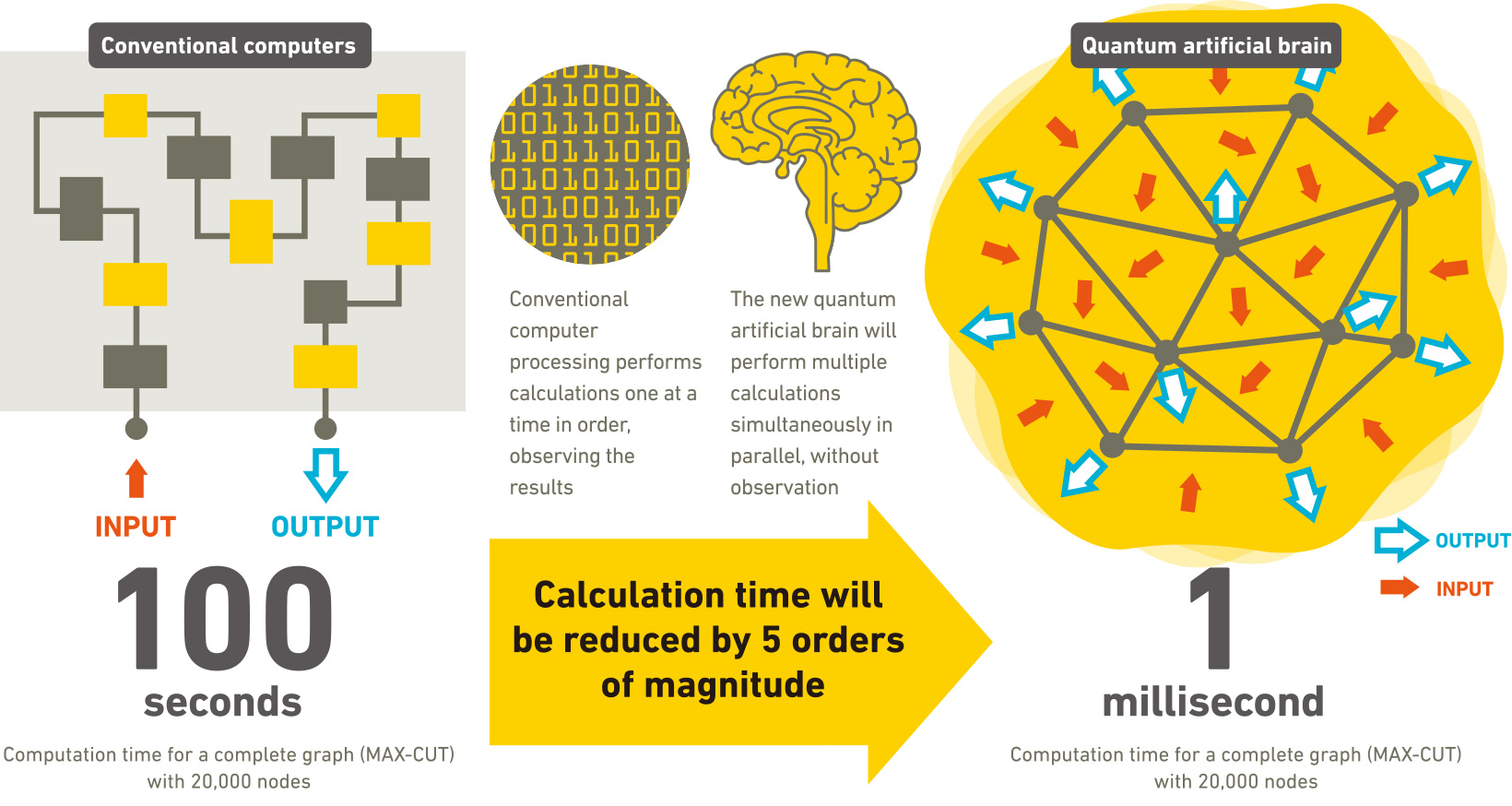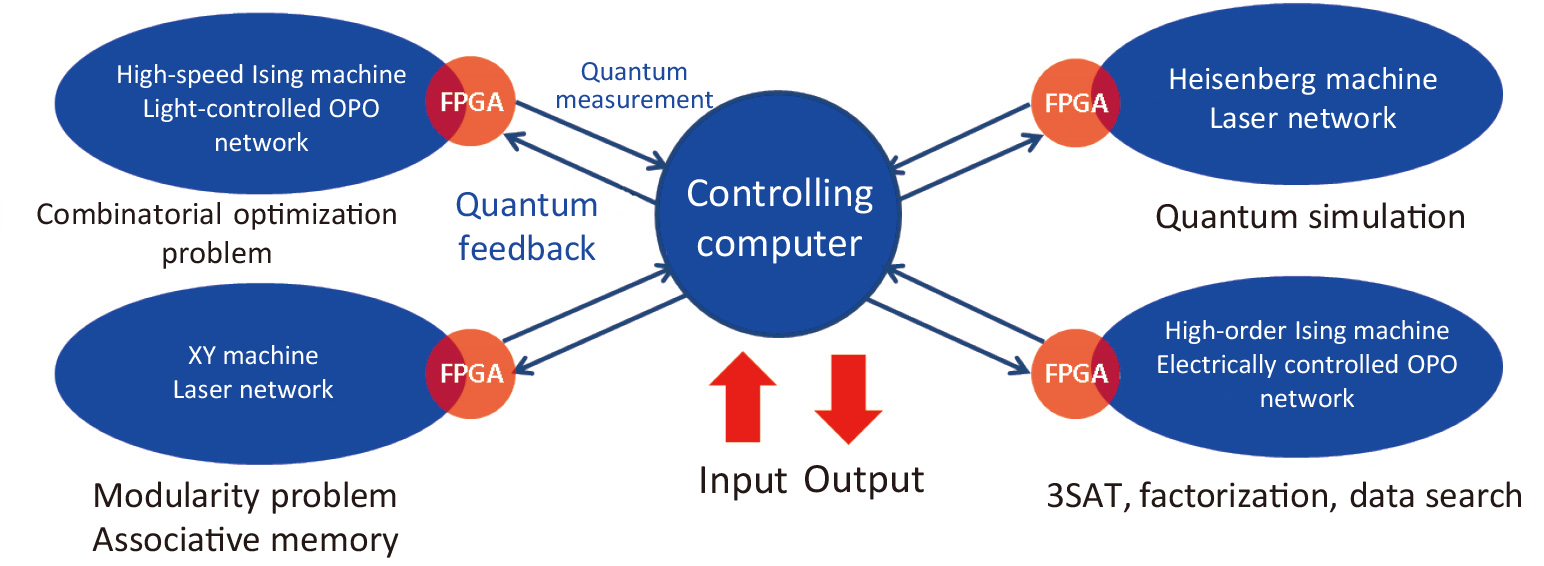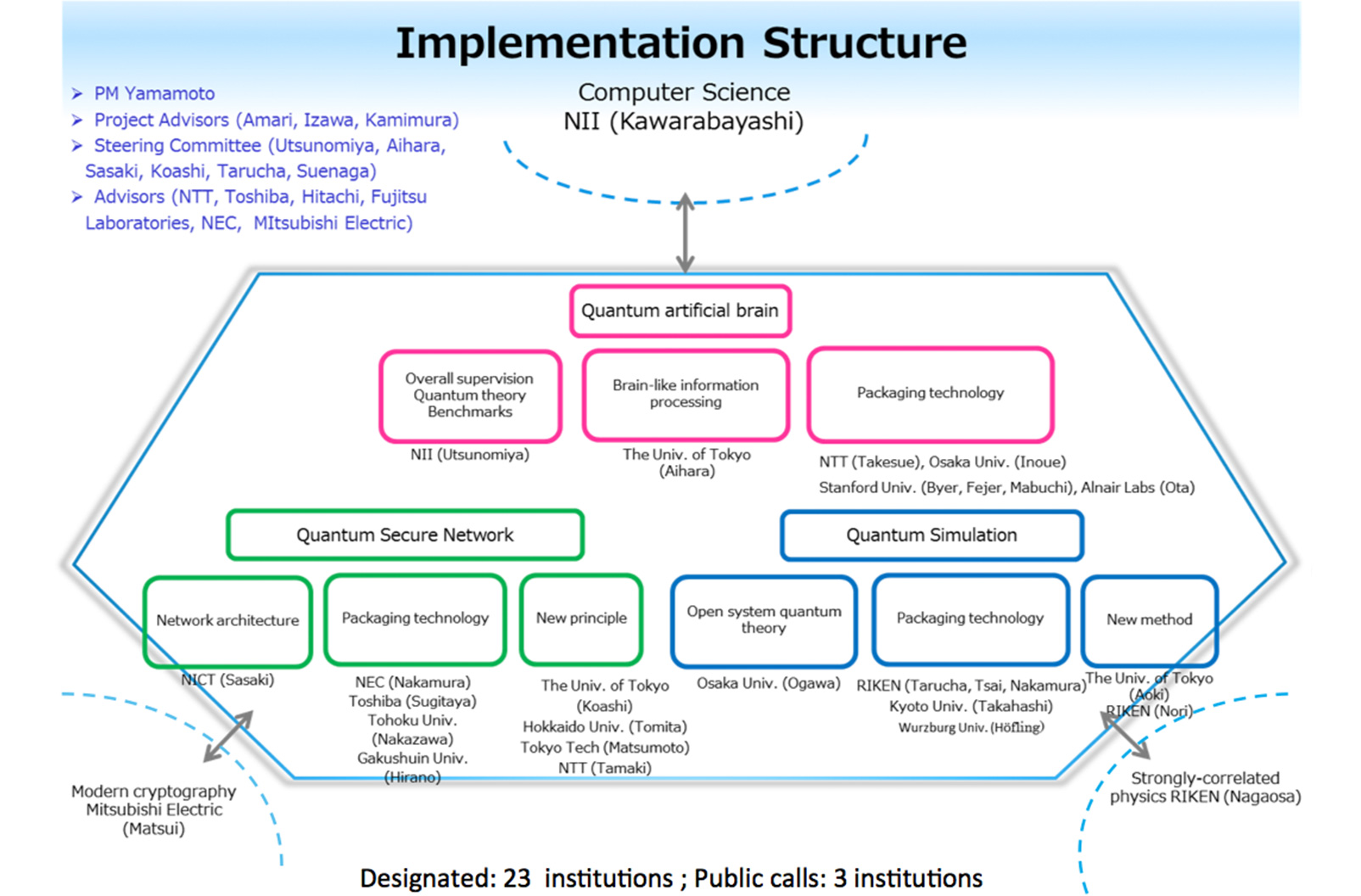
Yoshihisa Yamamoto
1978 Received Ph.D (Doctorate of Engineering) from the Graduate School of Engineering, The University of Tokyo
1978 – 1992 NTT (presently R & D Fellow)
1992 – 2014 Professor, Stanford University (currently Professor Emeritus)
2003 – 2014 Professor, National Institute of Informatics (currently Professor Emeritus)
2013 – 2014 Group Director, RIKEN
2014 – ImPACT Program Manager (Effort: 100%)
Established a group to study quantum information communication technologies at the NTT Basic Research Laboratories. Subsequently was on the front lines of global research into quantum information communications for more than 30 years. Has led many major national projects both in Japan and in the United States. From 2009 to 2014, was a core researcher in the Funding Program for World-Leading Innovative R&D on Science and Technology (FIRST) of the Cabinet Office.
Overview

Disruptive Innovation
- Each of the 10,000 - 1,000,000 light pulses generated simultaneously by a fiber laser/parametric oscillator is considered as a neuron, and these are mutually coupled by a quantum measurement-feedback circuit to create a synaptic network. Combinatorial optimization problems are mapped using the synaptic plasticity of a quantum measurement-feedback circuit.
 Time required to resolve the MAX-CUT problem (NP-hard) for a complete graph of 20,000 nodes:
Time required to resolve the MAX-CUT problem (NP-hard) for a complete graph of 20,000 nodes:| Modern computer (SDP) | 2 x 105 (sec) = 48 hrs. |
| ↓ 1/100 million | |
| Artificial quantum brain | 2 x 10-3(秒) |
The Challenges for the PM and the Impact of Success
Overview
- The neural network that governs information processing in the brain is composed of a single quantum wave function that extends coherently throughout the entire system. It is able to solve much faster than existing modern computers the kind of large-scale combinatorial optimization problems.
Impact on industry and society in the event of achievement

Scenario for Success and Achievement Targets
Method: Search for new principles through the integration of quantum information science, computer science and brain science.
Core technologies: Multiplexing optical pulse parametric oscillator, high-order high-frequency mode synchronous laser, quantum measurement-feedback circuit (FPGA/ASIC).
Achievement targets: Development of a quantum artificial brain with a clock frequency of 1 GHz and a pulse number of 5,000 - 10,000, and demonstration of superiority to existing modern algorithms.
Overall R&D Program Structure Created by the PM
(1) Quantum artificial brain (Ising model, XY model, Heisenberg model)
1. Quantum theory for optical parametric oscillator network and computational experiment.
2. Introduction of brain-type information processing.
3. Small-scale machine development and benchmarks.
4. Development of large-scale parametric oscillator network.
5. Development of large-scale laser network.
6. Development of large-scale quantum measurement feedback circuit.
(2) Quantum simulation (transverse field Ising model → Fermionic Hubbard model)
7. Strongly-correlated system quantum model, nonequilibrium open system quantum model.
8. Development of a quantum simulation program.
9. Development of superconductive circuit quantum simulator.
10. Development of optical semiconductor quantum simulator.
11. Development of cold atom quantum simulator.
(3) Quantum secure network (quantum key distribution)
12. Network actuator and globalization technology
13. Development of Decoy BB84 quantum key distribution device and application interface
14. Development of technology for secure communication with multilevel modulation (digital coherent optical communications)
15. Basic study of quantum key distribution and secure networks based on new principles
Implementation structure as Assembled by the PM
- Leading figures in the 3 exit fields (computer science, strongly-correlated condensed matter physics, modern cryptography) will be included in the team and will serve as contacts for capturing the latest advancements in modern technology.
- The team will be made up of leading research groups and will deliver results and information to a worldwide audience.

Organization
ImPACT: Impulsing Paradigm Change through Disruptive Technologies Program
ImPACT Program Manager
Yoshihisa Yamamoto
Yukiko Sato
Michiru Kunisaki

